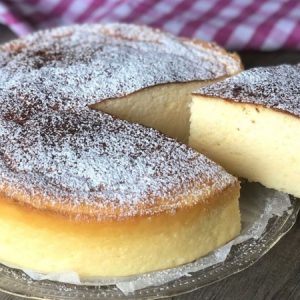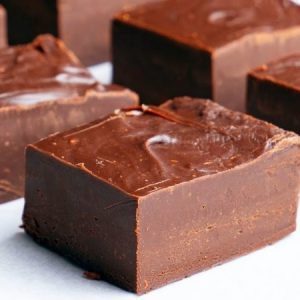First of all, mix together milk and oil (flavorless) with a wire whisk to emulsify in a bowl. Then to the mixture sift cake flour to the mixture using a wire whisk to mix everything well and set it aside. Then use two bowls to separate your egg yolks and egg whites. Put the egg yolks in the mixture and egg whites in a separate bowl. Mix in the egg yolks to the mixture using a wire whisk. Mix well until you don’t see any lumps. Do not over mix the batter because it will become tough.
Then set it aside next beat your egg whites with a hand mixer at medium speed. When it starts to form big bubbles add in sugar in twice and continue beating at medium speed. When the meringue can hold its shape and the pattern does not disappear lift the beaters and check the peaks will hold but the tips will fold back on themselves. A firm peak is good enough for the cake. Fold in 1/3 of meringue to the flour mixture gradually using a spatula.

Put the batter into the rest of the meringue and fold to combine. Do not swirl to mix otherwise you will deflate the meringue and the cake won’t rise. Make sure you scrape the bottom of the bowl to make sure the battery on the bottom of the bowl mixes well. Stop mixing once the colors unify. The batter should be quite still. Take a baking sheet and line with a silicon mat. Then pour the batter to the baking sheet from high. Turn the baking sheet to spread the batter then tap the baking sheet on the counter to remove any large air bubbles. Place the baking sheet in the center of a preheated oven.
Bake at 350F for 25 minutes. This will make sure the top of the cake is well baked and will not break easily. Prepare for the filling while the cake is in the oven. Put heavy cream in a bowl and add sugar then blend them together using a hand mixer. Beat the cream on medium-high speed until the cream can hold its shape. And it is thick and not runny. If the cream is too runny it will move around when you roll the cake. Also do not overbeat the cream.
But if you did you can add a little more cream to save it. Take the baked cake out and tap on the countertop to let hot air which will prevent the cake from deflating. The top should feel quite firm and a bit thick. If it is too tender and easy to break it is under baked. Use a knife or spatula to scrape the sides and remove the cake from the tin. Cover the cake with parchment paper and flip it over. Take off the silicone mat and then put it back.
Flip the cake back and let it cool slightly on a cooling rack. Cover the cake loosely with parchment paper while it cools down. This will prevent it from drying up. Once the cake has cooled down and it is warm to the touch you can add the filling and roll it up. If the cake is too hot it will melt the cream. Cut off one side of the long edge at an angle. Cut the other sides like normal.
The sides of the cake are not tender. It makes it easier to crack when we roll the cake. Spread the whipped cream on top using a knife. Take a rolling pin and place it under the parchment paper. Lift up the paper and roll the cake up with the help of the rolling pin. Hold the paper on the bottom and pull the cake backward to tighten it up.
Take your time while rolling the cake. Even if it does not go well you can always start. Fill the ends with more cream and use an offset spatula. Lastly carefully transfer the cake to a baking sheet. Cover the cake loosely with parchment paper. Make sure the paper does not touch the cake. Let the cake chill and set in the fridge. Once chilled you can slice it with a knife and enjoy it.
Ingredients;
- Egg 4
- Granulated Sugar 65g
- Cake Flour(Low Gluten Flour) 65g
- Vegetable Oil 55g
- Milk 55g
Cream Filling;
- Heavy Cream(Whipping Cream) 200g
Granulated Sugar 25g(10%-20% of the cream based on your own preference)
Instructions;
- Bake at 340°F for 25 min. Turn on the convection setting for the last 3 minutes if your oven supports that.









